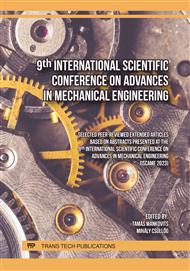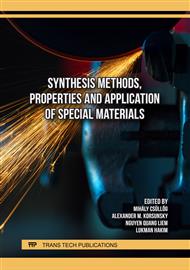p.3
p.13
p.23
p.35
p.43
p.51
p.61
p.71
Analysis of Horizontal and Vertical Grinding Technologies
Abstract:
The grinding technologies are widely used for finishing operations of various types of parts to provide better surface roughness and accuracy for the selected surfaces. Those technologies are expensive and take a lot of time to execute them consequently they are used when it is reasoned. The goal of this research is to compare the manufacturing design processes for horizontal and vertical grinding where the arrangement distinction between them is just the position of the tool axis compared to the machined surface of the workpiece. All of the necessary manufacturing parameters are determined to ease the design process. After the manufacturing design CAM design and CNC program writing are possible if CNC controlled machine is applied. Using of the same manufacturing parameters a comparative manufacturing analysis is done to determine the differences between the two processes.
Info:
Periodical:
Pages:
23-34
Citation:
Online since:
September 2024
Authors:
Keywords:
Price:
Сopyright:
© 2024 Trans Tech Publications Ltd. All Rights Reserved
Share:
Citation:



